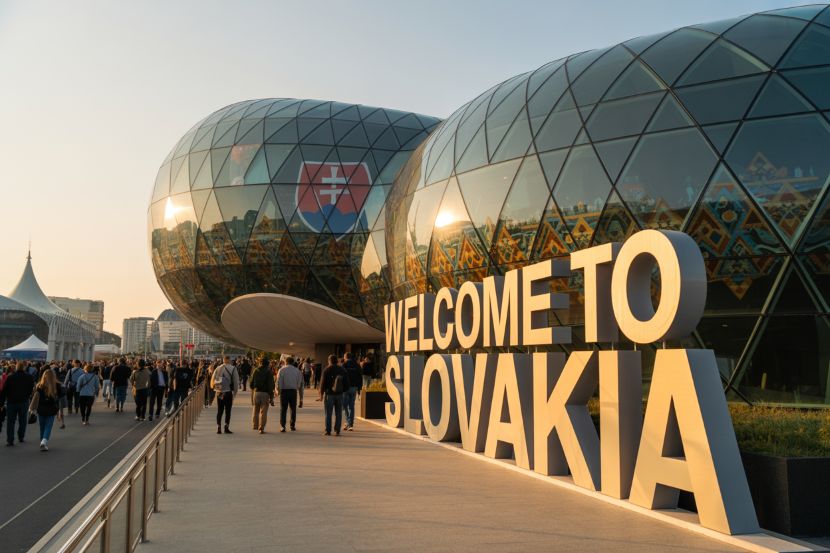
Published on
September 25, 2025

The increasing tourism relationship between Cambodia and Aichi Prefecture indicates a long-term partnership to the mutual development of the tourism sector. With Cambodia persisting in its emergence as an active tourism destination in Southeast Asia, the collaboration with Aichi opens up opportunities for both entities to exchange rich cultural heritage and tourism resources. The collaboration will not only benefit tourism but also support the development of local businesses, particularly in hospitality, transport, and tourism services. Aichi’s well-known historical landmarks, such as Nagoya Castle, Shitamachi Tanabata Festival, and its bustling modern cityscape, will complement Cambodia’s iconic attractions, including Angkor Wat, Sihanoukville, and Phnom Penh.
Joint Tourism Events: Promoting Cultural Exchange
The tourism exchanges between Cambodia and Aichi Prefecture will be further strengthened through joint tourism events. These events will feature shared cultural experiences, culinary festivals, art exhibitions, and traditional performances, enabling visitors from both regions to engage with each other’s heritage and modern culture. These initiatives are expected to generate increased tourist arrivals, fostering closer people-to-people connections and helping both regions develop a strong cultural diplomacy presence on the global tourism stage.
One of the key components of these initiatives will be a biennial cultural exchange festival, where Cambodian and Aichi artists, musicians, and performers can showcase their talents, allowing tourists to explore the artistic side of both regions. These cultural activations will attract visitors who are interested in traditional arts, modern performances, and gourmet food experiences from both destinations.
Direct Flights: Enhancing Connectivity for Tourism Growth
A key development that will drive further tourism growth between Cambodia and Aichi Prefecture is the introduction of direct flights. With Emirates, Turkish Airlines, and Etihad Airways already expanding their air routes to Cambodia, direct flights between Japan and Cambodia will further enhance tourist connectivity between the two regions. These direct flights will not only increase the volume of Japanese tourists visiting Cambodia, but will also make it easier for Cambodian visitors to travel to Japan for both business and leisure purposes.
Minister Huot Hak emphasized that improved air connectivity is a central element of the tourism strategy, noting that direct flight routes will open up new possibilities for tourists, especially those traveling for cultural tourism and business events. With Japan being a major outbound tourism market, this development is expected to result in more frequent visits to Cambodia by Japanese tourists seeking to explore Cambodia’s cultural and natural attractions.
Promoting Cambodia’s Rich Cultural Heritage to a Global Audience
Cambodia’s rich cultural heritage and UNESCO World Heritage sites continue to be key factors in the country’s success in the global tourism market. As part of the growing collaboration between Cambodia and Aichi Prefecture, Cambodia will showcase its iconic temples, traditional festivals, local crafts, and gastronomy at international tourism events. Aichi Prefecture, known for its historical sites such as Nagoya Castle and its traditional tea culture, will provide a complementary appeal to Cambodian cultural tourism initiatives.
One of the most anticipated aspects of this cultural exchange is the promotion of Cambodia’s history and heritage through tailored tourism packages. These packages will focus on cultural exploration, including historical tours of Angkor Wat, Banteay Srei, and Preah Vihear Temple, alongside modern cultural experiences such as Cambodian culinary tours and arts exhibitions.
Expanding Cambodia’s Tourism Offerings: New Destinations and Adventure Tourism
As Cambodia continues to attract international tourists, the country is working to expand its tourism offerings beyond its iconic cultural landmarks. The focus is on promoting emerging destinations in regions like the Mekong River, Kep, and Koh Rong—areas that are gaining popularity among eco-tourists and those seeking off-the-beaten-path experiences. Adventure tourism, eco-tourism, and beach holidays will be emphasized as part of this effort, making Cambodia an ideal destination for varied travel interests.
Aichi Prefecture, with its scenic beauty and outdoor activities, such as mountain trekking and cycling around Taisho Lake, serves as a perfect example of how tourism destinations can diversify their offerings. By learning from Aichi’s tourism model, Cambodia is exploring new opportunities to attract travelers seeking eco-friendly activities, cultural experiences, and wellness tourism.
Leveraging Technology for Tourism Growth and Development
Technology is playing a critical role in Cambodia’s tourism strategy, allowing the country to modernize its tourism offerings and attract digital-savvy travelers. With the rise of online travel agencies (OTAs) and social media influencers, Cambodia is increasingly focusing on digital marketing and online travel booking platforms to reach younger, more tech-savvy tourists. Cambodia’s tourism board is also working to enhance the tourism website to include virtual tours, interactive maps, and travel planning tools that make it easier for international travelers to learn about and book Cambodia tours.
Through the use of technology, Cambodia and Aichi Prefecture aim to create seamless travel experiences for their visitors, ensuring tourists can easily access information, book services, and share experiences during their trips.
The Future of Cambodia and Aichi’s Tourism Partnership
Cambodia-Aichi Prefecture tourism partnership will further tighten and expand. With direct flights, cultural tourism projects, and new destination development, the partnership will assist both areas in their tourism development objectives. With both Cambodia and Aichi further utilizing sustainable tourism strategies, cultural exchanges, and infrastructure investment, they will become major players in the international tourism scene.
The increasing demand for tourism between the two nations is not only promoting Cambodia’s niche tourism products, but also establishing a tighter economic connection between Japan and Southeast Asia. The agreement between Cambodia and Aichi is a win-win situation for both, as it promotes mutual development and sustains cultural diplomacy by way of tourism.
link






